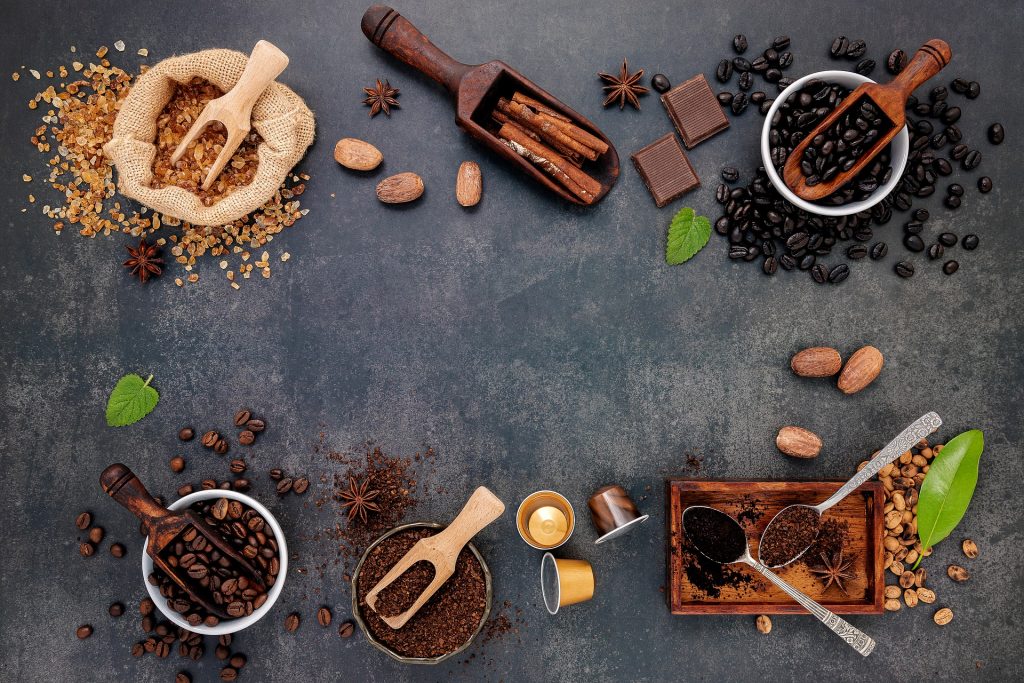
Six of the Best Asia Travel Destinations for Coffee and Tea Lovers
Imagine a day without a cup of tea or that perky aroma heralding your first coffee of the day? Scary isn’t it…oh, ok, maybe not for you, yes ok and you, but aside from you two, for the rest of us, a day without tea or coffee is unimaginable. Many of us start our day, accompany our meals, or end our day, with a reviving shot of coffee or a refreshing cup of tea. So many of us in fact that 2.25billion cups of coffee and 2.16billion cups of tea (a billion of those are mine) are drunk worldwide each day. That’s a lot of tea cups and coffee mugs raised… we should wire all those elbows to the national grids to help provide green-energy for all those boiling kettles. These simple beverages, derived from trees, mark so many moments in our lives that I am sure there has never been any significant event in a person’s life that hasn’t been accompanied or bookended by a tea or coffee.
Tea to the English is the ultimate first aid kit, any disaster or shock can be ameliorated with a pot of tea. Coffee for Italians is life, Giuseppe Verdi put it so succinctly, “coffee is a balm for the heart and the spirit”. And let’s not forget the importance of the Italian influence on the modern coffee culture around the world, even the language of coffee (that long list of unpronounceables on the board behind the baristas head in your favourite coffee shop) comes from Italy’s love and nurture of our cup of Joe.
In travel terms, seeking wonderful locations to enjoy your beverage of choice will give you unique insights into the local history and cultural scene as well as those all too essential insta-moments. The local variations of these time honoured drinks are always fun to explore too. Many cultures have their own take on how to enjoy tea and coffee that these stories are a journey in themselves. From the elegance of a Japanese tea ceremony to Taiwan’s ‘ma and pop’ business phenomenon, Bubble Tea. Travel across Asia and both tea and coffee will accompany you in a wide variety of guises, to wonder at, applaud, be amazed at, enjoy with relish or pull those ‘bulldog swallowing a wasp’ faces with the first taste. Tea and Coffee IS LIFE in a cup (or mug) for us all, one that transcends boundaries and borders that is as wonderful shared as it is enjoyed alone in moments of reverie.
In this edition we are showcasing our pick of Asia’s great coffee and tea destinations, wonderful places to enjoy a good brew while deepening your understanding of the history and culture behind each cup. So brew up, sit down, and enjoy…

DARJEELING – INDIA
When the British began their love affair with tea in the 1600s, trading opium for tea with the Chinese, it started a journey that lead to wars over both opium and tea until the incredible story of Robert Fortune, botanist, spy, thief, in the mid-19th century, took the secrets of cultivating and preparing tea from China to British India and so began their strong and steamy relationship.
Darjeeling, a former hill retreat from steamy Calcutta during the days of the British Empire, is today a dream destination for tea lovers. Darjeeling tea is one of the best black teas in the world, if not the best, the name often chosen by numerous counterfeiters who try to pass their products off as this unique variety, which is why it is known as the champagne of teas. Undoubtedly there is more Darjeeling tea on the market each year than is actually produced, so one must shop carefully to ensure origination as unlike wine, provenance and appellation is poorly protected in the marketplace.
Imagine drinking tea in the shadow of the Himalayas, the flavor of the brew as fresh as the crystal clear mountain air as you steep yourself within this timeless view.

Glenburn Tea Estate
Darjeeling, India
Set in the Himalayas on a hillock above the banks of the River Rangeet, this peaceful family owned and run tea plantation retreat offers the perfect place in which to discover Darjeeling and its teas.
Glenburn Tea Estate has two comfortable and beautifully furnished bungalows, each with 4 luxurious suites, that enjoy views of the world’s third largest mountain, Kanchenjunga and the surrounding gardens and tea plantation. Owned by tea planters for generations, visitors can tour the working tea estate, enjoy a variety of activities, and feast on delightful Indian, Oriental, and Western cuisine with much of the produce coming straight from the plantation’s own organic gardens.
A tea tasting session is not to be missed. Learn the art of tasting a range of black, green, oolong and white teas, and discover the differences in aroma, flavour and appearance. Learn the stories of the tea, the beverage that accompanies so many moments of our lives.
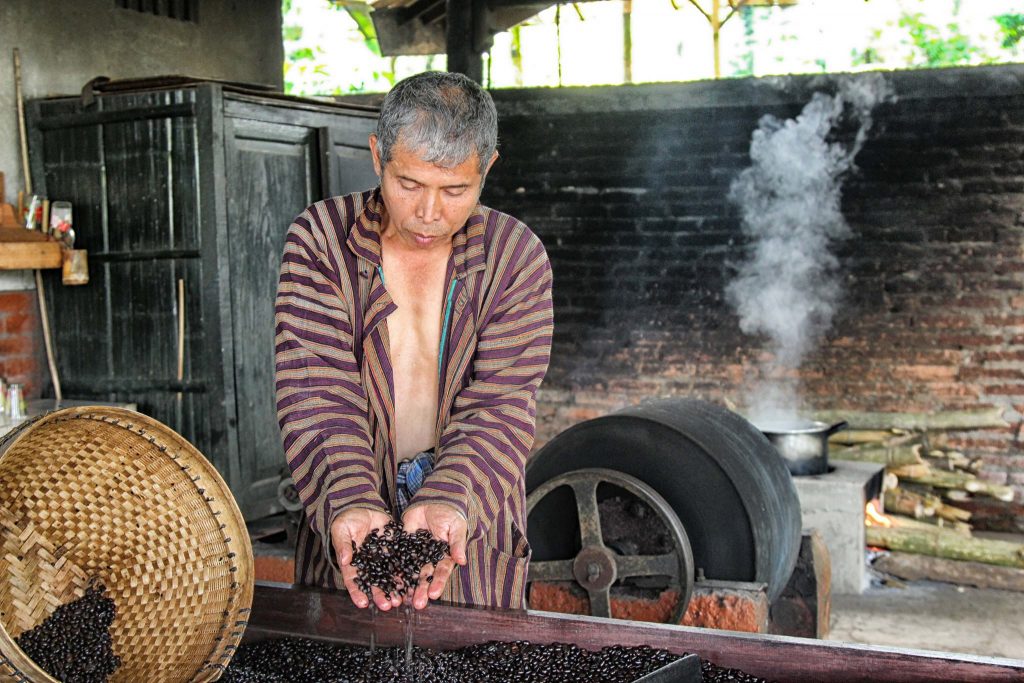
JAVA – INDONESIA
During the 1600s, the Dutch introduced coffee to Southeast Asia. They brought coffee trees to places like Bali and Sumatra, where it’s still grown today. Java, where the capital Batavia (today called Jakarta) was located, was where coffee was also grown and where the majority of Indonesia’s coffee was exported from. The sacks of coffee beans arriving in Europe were all marked ‘Java’, and Java became synonymous with coffee to such an extent that Java supplanted coffee and we started drinking cups of Java instead of cups of coffee.
The Dutch were likely the first to use the name, and they may have used it to refer to single-origin coffee from Java. As the coffee trade grew though, the term was adopted by more and more people throughout the world, and any specificity was lost. Today, “java” has become a generic term for coffee and no longer refers only to coffee from the Island of Java.
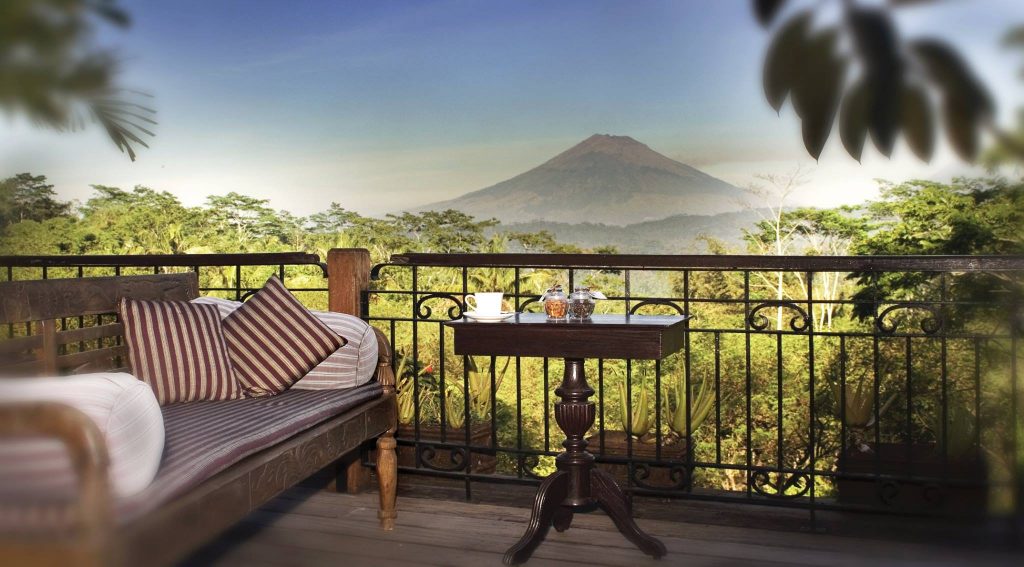
MesaStila
Java, Indonesia
As you step in to the MesaStila resort, the aroma of its rich elegant past is carried on the breeze as the scent of the robusta coffee beans from the roasting house wafts past. MesaStila dates back two hundred years where it blends Dutch and Javanese history amongst the coffee beans and spices. The rich volcanic fertile islands of Java produce some of the world’s finest coffee and this luxury spa and resort is set within its ancestral coffee plantation.
Focusing on Wellness, MesaStila also offers distinctly Javanese experiences including traditional Pencak Silat martial arts, an array of organic, healthy fare and Javanese food, and indulgent therapies at its Hammam Spa. Showcasing wonderful antiques, a Colonial railway station and 23 historic “joglo” villas, immersed within a spectacular natural setting with lush tropical gardens and a dramatic backdrop of eight enigmatic volcanoes on the horizon the resort is perfectly located for exploring the best of Java from the incredible Borobudur Temple to exploring local villages by bicycle and treks on iconic mountains and volcanoes, all fortified by a fresh cup of Java!
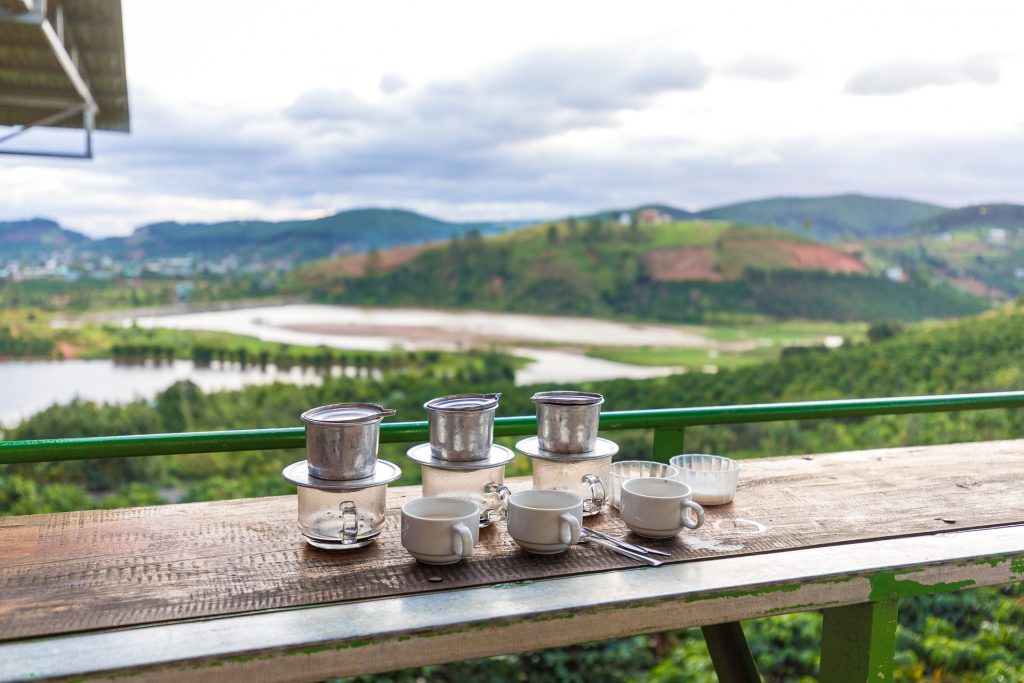
VIETNAM
Coffee was introduced into Vietnam in 1857 by a French Catholic priest in the form of a single Coffee Arabica tree. Vietnam did not become a major exporter of coffee until the Đổi Mới reforms and the opening of the economy in the 1980s. Today, many coffee farms have been planted across the central highlands and the hard-working Vietnamese are the world’s second biggest exporter of coffee beans, second only to Brazil.
Vietnam’s coffee production has skyrocketed in the past 30years surpassing many seasoned producers. The growing conditions are perfect for high yields from Robusta coffee and 95% of Vietnam’s coffee production is from these beans, with the country providing 40% of the world’s Robusta bean production.
Vietnamese coffee has a thick texture, a strong, acidic taste, and a much higher caffeine content, and it’s commonly served with condensed milk, or their uniquely Vietnamese beverage Cà Phê Trứng or Vietnamese Egg Coffee. Egg and coffee, a match made in gastronomic heaven? It is in the hands of a Vietnamese barista, with egg yolks whipped with condensed milk and combined with hot coffee to make a wonderfully rich and creamy drink, the perfect way to enjoy a Vietnamese Robusta.

Secret Garden 131 CALMETTE Restaurant
Ho Chi Minh City, Vietnam
Secret Garden 131 Calmette is a chic and modern restaurant set in the beating heart of Ho Chi Minh City. The restaurant offers both indoor and outdoor seating. The inside area is adorned with chic furniture and rustic bamboo, and seating outside diners enjoy a serene space within a lovely garden. The team at Secret Garden perfectly combine traditional and modern using the freshest organic ingredients to create their Vietnamese cuisine. Besides the many traditional Vietnamese dishes their fusion menu includes spring rolls with grilled chicken, avocado and brown rice, seafood and mushroom salad, stir-fried pho, and stir-fried udon with roasted duck. Don’t forget to round off your meal with a Vietnamese coffee for the perfect finish before striking out to continue your exploration of Saigon.

KYOTO – JAPAN
There is no better place to experience a Japanese tea ceremony than in Kyoto, Japan. The history of the ceremony goes back at least to the 16th century, though tea has been drunk in Japan for more than a thousand years.
Tea was first introduced to Japan from China as an aid to Buddhist meditation, but the tea ceremony has long been a revered facet of Japanese culture by both the Japanese and visitors alike. ‘Sado’, the way of tea, follows a very specific and ancient routine. Guests will be greeted by a silent bow and then engage in removing their shoes and ‘purifying’ through the washing of hands and the rinsing of mouths prior to moving on to the main ceremony within the tea house. Waiting areas are decorated with ancient scrolls and guests are summoned to the tea house by a gong. Sitting on the floor wearing a traditional kimono, you will be served ‘thick’ or ‘thin’ Japanese green tea according to your preference and this will be prepared by your server whose every carefully executed movement is a long-practiced art. At the end of the tea ceremony, you will be invited back to the decorative waiting area to remove your traditional garments, collect your belongings and return to the outside world, feeling serene, refreshed and relaxed.
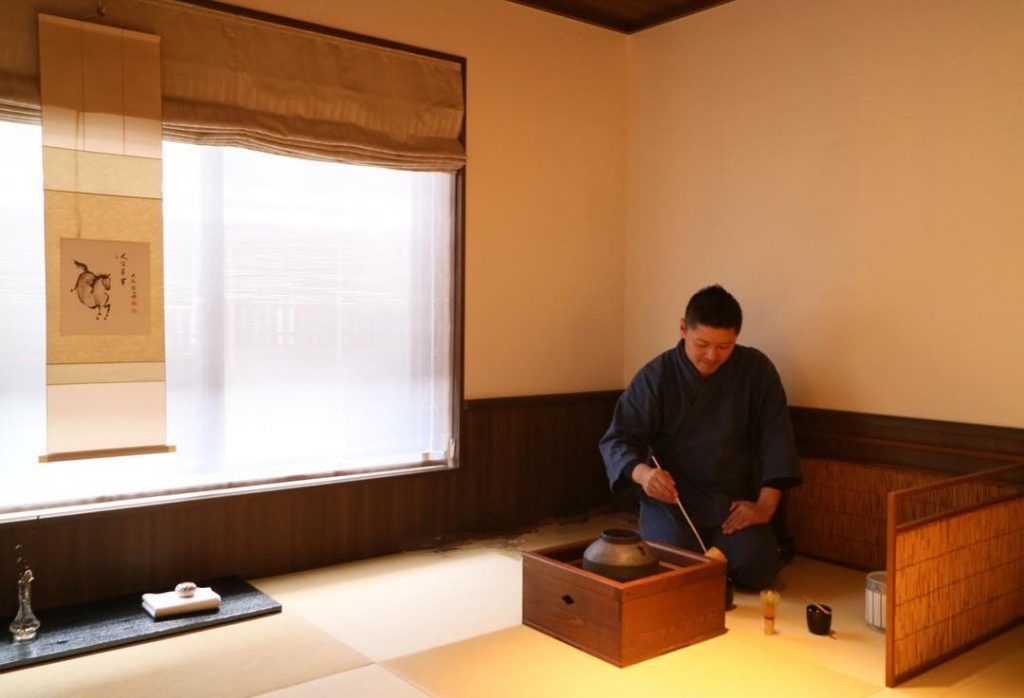
Junei Hotel
Kyoto, Japan
With just eight guestrooms, this community-based luxury boutique hotel was created to showcase an “amenities that enliven the five senses” concept. The 50sqm guestrooms beautifully combine traditional and elegant Japanese design with modern touches and pay homage to the historic Kyo-machiya (traditional Kyoto-style wooden townhouses).
Kyoto is the cultural capital of Japan. It is also famous for its rich, traditional gastronomy and the Geisha and traditional tea ceremony. The Junei’s chef offers Kyoto cuisine with a modern creative twist, and is well-known for his ‘shidashi-ryori’, refined dining Kyoto style, best served with a glass of local sparkling sake from Tanzan Shuzo.
Japanese aesthetics and attention to details are renowned and this quality is celebrated at the Junei. Guests can enjoy a curated collection of quality amenities to match the hotel’s aesthetics including imabari towels, 100% cotton gauze pajamas, shigaraki ceramics, handmade flower crystal pottery, and a hydrogen bath.
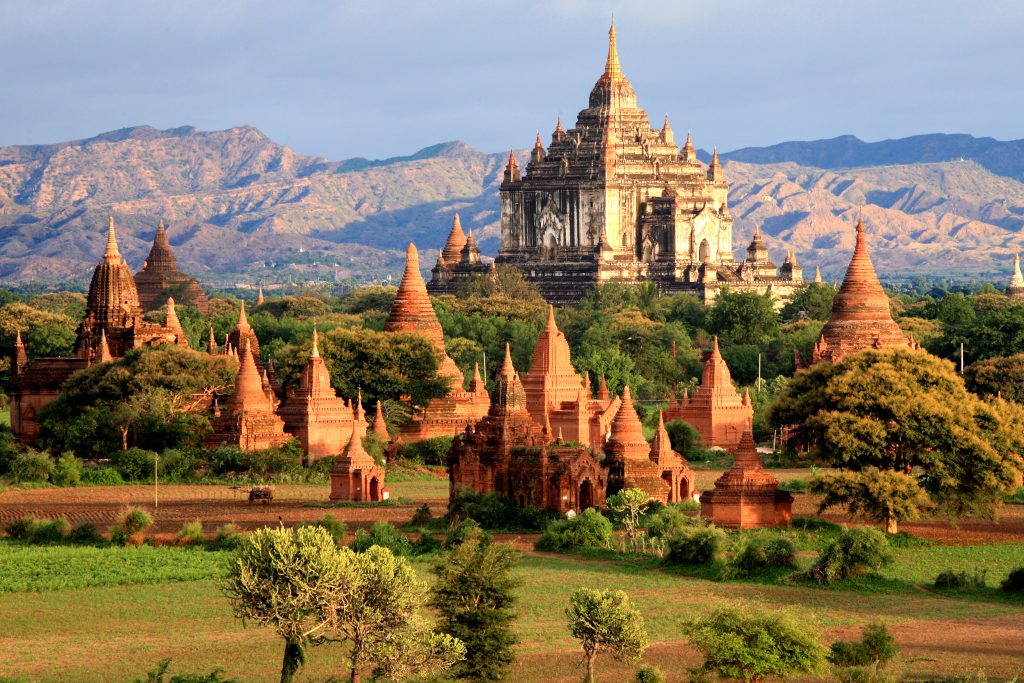
MYANMAR
There are few places in the world where you’ll find tea leaves on your plate as well as in your cup, but Myanmar is one of them. Tea is a part of Myanmar culture and important in daily life. Lahpet is the name given to this fermented or pickled tea and is considered the ultimate delicacy by the Burmese. In ancient times fermented tea leaves were used as a peace symbol or peace offering between warring kingdoms. Nowadays, the Laphet tray is an expression of hospitality, an important and valued offering to houseguests. Used both ceremonially for important occasions and for everyday drinking, lahpet is a staple of the diet in Myanmar. Only the very best tea leaves are used for fermenting, and you can enjoy them in one of the many varieties of ‘tealeaf salad’ found throughout the country. Of course, all this dining is perfect paired with fresh brewed Myanmar tea.
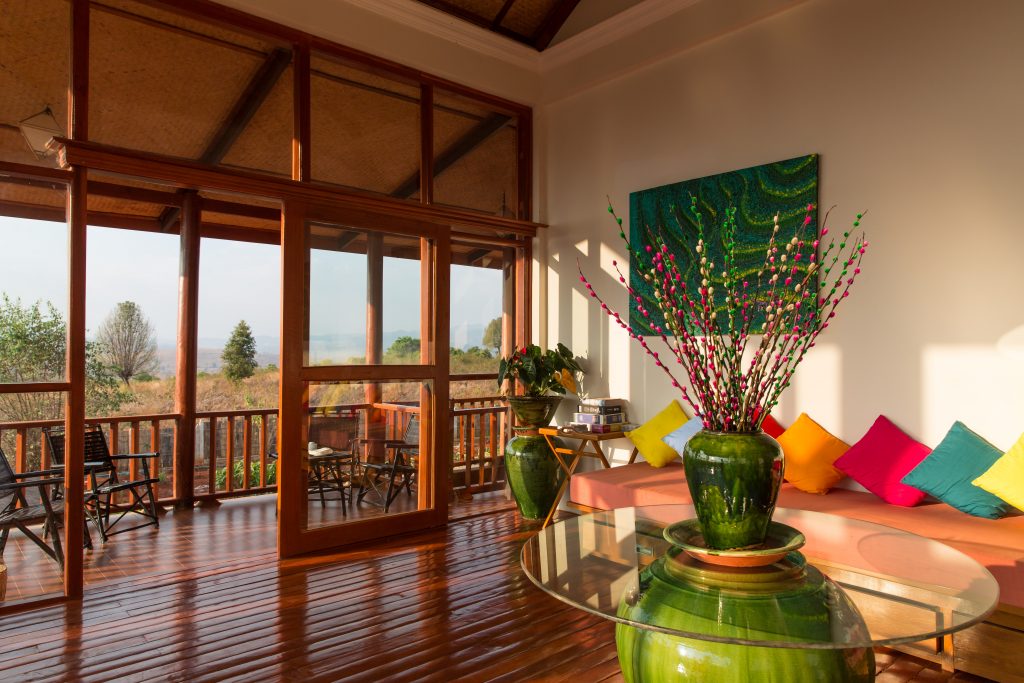
Pindaya Farmhouse
Pindaya, Shan State, Myanmar
Situated less than two hours by car from Inle, and surrounded by a picturesque lake, Pindaya is located in the western part of the Shan State of Burma. Here in this rural idyll, you can trek the hills and countryside to explore timeless landscapes filled with farms and tribal villages. Look in wonder at the thousands of Buddhist images inside the celebrated ancient limestone Pindaya Caves. Stroll around the local farmers’ market to experience this quaint town’s indigenous customs and culture. Shop for traditional handcrafted Shan paper umbrellas. And savour delicious Burmese cuisine. A road less travelled—Pindaya.
Surrounded by the host’s organic garden and featuring beautiful mountain views, red soil and green plantations, this family owned and run farmhouse share a wonderfully warm hospitality where you arrive as friends and leave as family. Their home is a traditional Shan farmhouse with commanding views of the surrounding farmland and countryside set as it is on a rise a short way out from Pindaya town. Nestled in the farmlands away from any noise with idyllic scenery, this cozy luxury 5-bedroom farmhouse is set on seven acres of land is just a 5-minute drive from Pindaya or a 30-minute stroll through the fields.

CHINA
Legend has it that the Chinese discovered tea nearly 5000years ago. Emperor Shennong recognized that unboiled water carried pathogens that could lead to illness, so instructed people to boil water before drinking. While traveling his entourage stopped to boil water and leaves from a tree fell into the boiling water and the infusion intrigued the Emperor. Tasting it, he found it to be refreshing, and the beverage was born.
To the Chinese, this humble beverage is considered one of seven daily necessities, the others being firewood, rice, oil, salt, soy sauce, and vinegar. With an annual yield that amounts to 36% of the world’s tea, China is the top tea-producing country in the world. Aside from the more well-known black tea, China also produces white, oolong, red, yellow, puer and flower tea.
The Chinese are heavy drinkers…of tea. So in need of their fix are they that airports have tea stations and readily available hot water for folks to refresh tired leaves in their flasks, or avail of a fresh brewed pot or flask of tea. The tea flask is a ubiquitous accessory of the Chinese traveller, those magical leaves on-hand ready to refresh as required.
Teahouses have been a sanctuary for people to sit, enjoy tea and share thoughts and ideas for centuries. Rank and social standing are left at the threshold and all classes are said to be suspended within a Chinese teahouse. They have long been the place for scholars and philosophers to share ideas, a place to discuss the day’s business, meet friends and enjoy tea. On a visit to a teahouse you may notice a lot of finger tapping, this is made as a mark of respect or thanks to the tea master or tea server. Be sure to make a visit to a teahouse on your next visit to China.

Tulou Boutique Hotel
Fujian, China
Located in Taxia village in the mountainous interior of Fujian, the Tulou Boutique Hotel is a heritage hotel that has been built to incorporate and preserve five 200year old traditional Tulou, Fujian style, homes. The hotel’s 5 buildings, 3 of which date from the Qing Dynasty, exemplify traditional Hakka architecture of rammed earth walls, stone and roughhewn wood. These structures are in total harmony with the environment, sharing an exquisite sense of timeless place with guests. Elegant interiors are decorated with locally sourced wood and walls decorated with fine art from local artists, now internationally acclaimed. Located within the UNESCO World Heritage listed Tianluokeng Tulou Cluster, the Tulou Boutique Hotel is also an active cultural center, that preserves, shares and showcases Hakka culture.
The village dates back more than 600 years and still includes many well-preserved original Tulou buildings. Visitors can explore the village, take tea in the teahouse, visit the pottery workshop to learn about Zhangzhou porcelain pottery making and simply enjoy the beauty of the surrounding countryside, ideally with a flask of freshly brewed tea to hand!

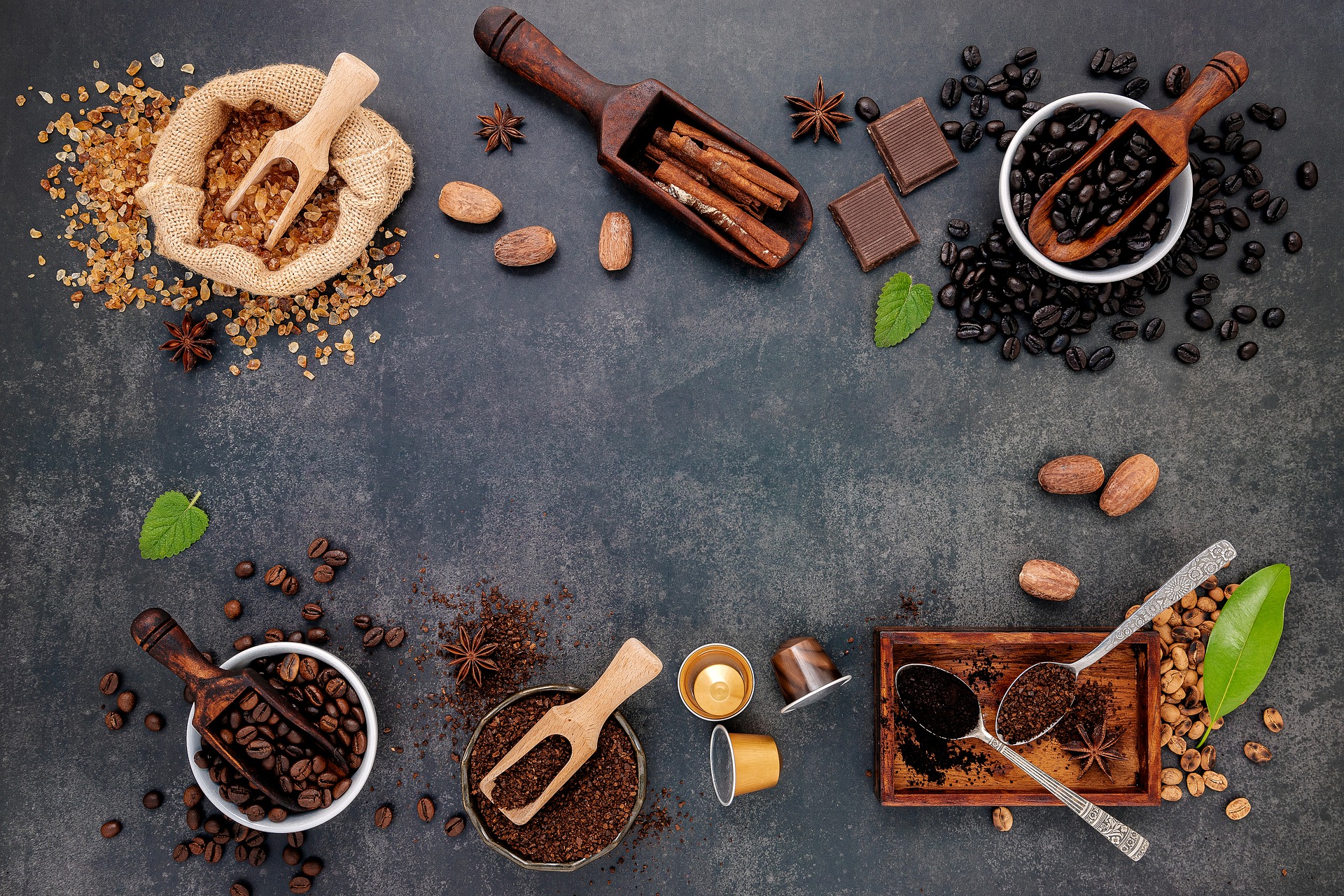
Comments are closed.